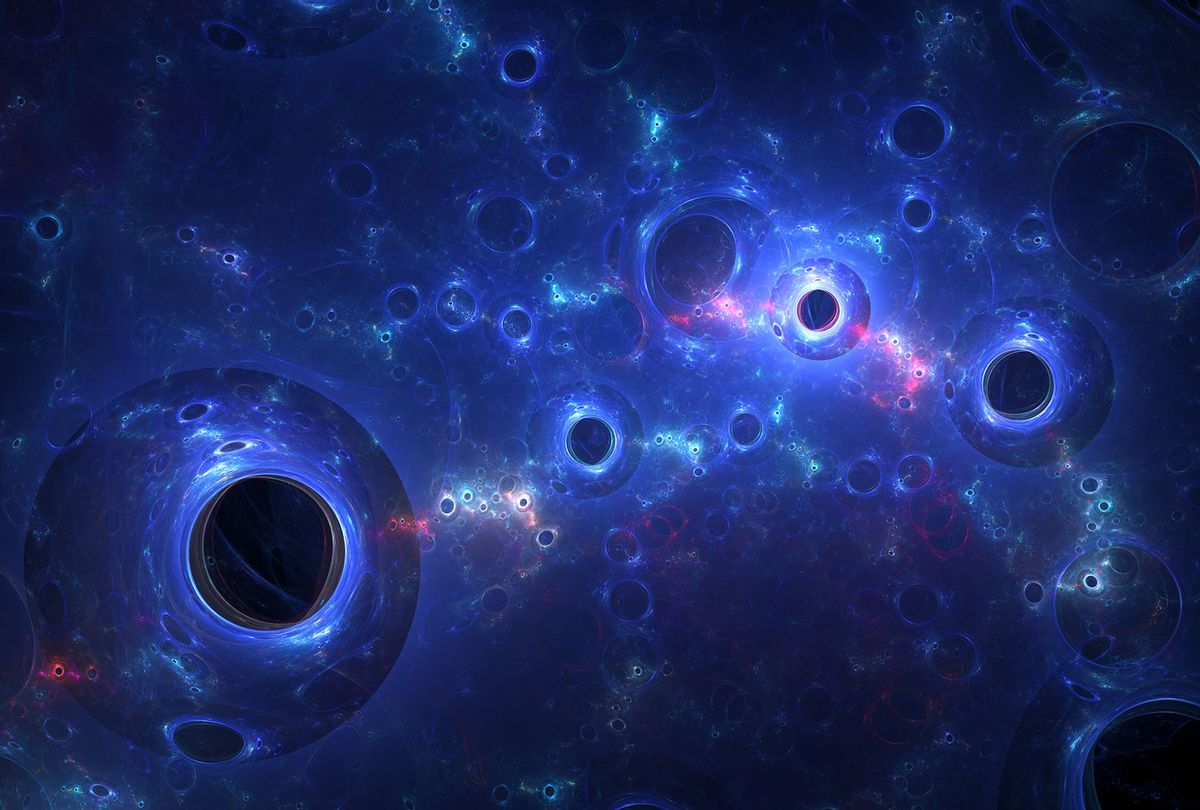Dark matter is one of the universe's most enduring mysteries. Its existence can be intuited by how it affects gravity, and yet no one knows exactly what it is, even though it makes up 27 percent of the universe's total mass and energy — far more than the 5 percent of the universe that "normal" matter, like planets and stars, comprises.
Yet despite not knowing what kind of particles constitute dark matter, astronomers have been able to use telescopes to intuit where dark matter sits in the universe. That's in large part because, true to its name, dark matter is hard to directly observe but has a huge gravitational effect and a lot of mass wherever it appears in bulk.
Now, astronomers are using this data to create a detailed map of dark matter in the universe.
First, astronomers from the University of Waterloo published a study four years ago in the Monthly Notices of the Royal Astronomical Society mapping out filaments of dark matter stretching between galaxies. Then more recently, a team of international researchers published a new map that was published in the Astrophysical Journal.
Generally, maps of dark matter contained galaxies that were very far away from our own local galactic supercluster, the neighborhood of galaxies that are gravitationally bound and which include the Milky Way.
"Ironically, it's easier to study the distribution of dark matter much further away because it reflects the very distant past, which is much less complex," said Donghui Jeong, associate professor of astronomy and astrophysics at Penn State University, in a statement.
Jeong was referring to the fact that observing a far-away galaxy means, by definition, observing something that happened a long time ago due to the slow speed of light. "Over time, as the large-scale structure of the universe has grown, the complexity of the universe has increased, so it is inherently harder to make measurements about dark matter locally."
Previous attempts to map out dark matter have been grueling. Researchers in their latest effort relied on a large set of galaxy simulations, called Illustris-TNG, which included galaxies, gasses, and other visible matter in addition to dark matter. Galaxies similar to the Milky Way were selected specifically in the simulations; specifically, data on 17,000 galaxies within 650 million light-years of the Milky Way. The researchers relied on machine learning to put it all together and produce a noble outcome.
Want more health and science stories in your inbox? Subscribe to Salon's weekly newsletter The Vulgar Scientist.
"When given certain information, the model can essentially fill in the gaps based on what it has looked at before," Jeong said. "The map from our models doesn't perfectly fit the simulation data, but we can still reconstruct very detailed structures. We found that including the motion of galaxies — their radial peculiar velocities — in addition to their distribution drastically enhanced the quality of the map and allowed us to see these details."
Indeed, the quality of the map far surpasses the ones that were created in the past. As Jeong said, the new simulation enhances smaller details, Specifically, the map highlights structures in the extragalactic region known as the "local sheet" and the "local group," which both include parts of our own Milky Way. It also identifies new structures that astronomers will further investigate. Remarkably, the map also details the directional "flow" of dark matter, as denoted by arrows.
"Having a local map of the cosmic web opens up a new chapter of cosmological study," Jeong said. "We can study how the distribution of dark matter relates to other emission data, which will help us understand the nature of dark matter. And we can study these filamentary structures directly, these hidden bridges between galaxies."
Jeong emphasized that better understanding the role of dark matter in our universe is critical to our current existence and the future.
"Because dark matter dominates the dynamics of the universe, it basically determines our fate," said Jeong. "So we can ask a computer to evolve the map for billions of years to see what will happen in the local universe. And we can evolve the model back in time to understand the history of our cosmic neighborhood."
A preview of the map can be viewed here.



Shares